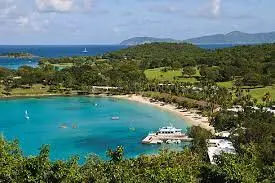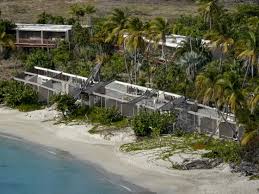Caneel Bay, St. John: A Journey Through Time
Prehistoric Roots:
Before the arrival of Europeans, St. John was inhabited by the Taino people, an indigenous group with a rich culture and deep connection to the land and sea. They fished, farmed, and left behind an array of archaeological sites, including petroglyphs and artifacts. Evidence of their existence can still be found around Caneel Bay today, offering a glimpse into the island’s prehistoric past.
European Exploration and Colonial Era:
In 1493, during Christopher Columbus’s second voyage to the Americas, he spotted and claimed St. John for the Spanish Crown. However, it wasn’t until the early 17th century that the first European settlers established a presence on the island. Throughout the following centuries, St. John changed hands multiple times, passing from Spanish to Dutch control before becoming a Danish colony in the late 17th century.
Plantation Economy:
The Danes brought enslaved Africans to work the island’s plantations, primarily cultivating sugar cane, cotton, and indigo. The harsh conditions and exploitative labor practices marked this dark period of history. Over time, many plantations emerged on St. John, and Caneel Bay was no exception. It became home to one of the island’s prominent sugar estates, known as the Caneel Bay Plantation.
Ruins of the Past:
As you explore Caneel Bay today, you’ll encounter the remnants of this bygone era. The ruins of the sugar mill, rum factory, and slave quarters stand as haunting reminders of the island’s plantation past. These sites are now protected as part of the Virgin Islands National Park, established in 1956.
The Rockefeller Connection:
The mid-20th century brought a significant turning point for Caneel Bay. In 1952, the renowned American industrialist and philanthropist, Laurance S. Rockefeller, visited St. John and was captivated by its natural beauty. Recognizing the need to preserve this paradise from rampant development, Rockefeller set out to acquire large tracts of land on the island, including the Caneel Bay Plantation.

Caneel Bay ferry on the dock
The Birth of Caneel Bay Resort:
Laurance Rockefeller envisioned a unique resort that would coexist harmoniously with nature. He engaged the services of renowned architect and conservationist, Lawrence B. Rockefeller, to design the resort. The goal was to create a luxurious retreat that showcased the island’s natural splendor while maintaining environmental sustainability.
Caneel Bay Resort opened its doors in 1956, offering guests an exclusive and tranquil escape amidst lush tropical gardens and pristine beaches. The resort featured cottage-style accommodations, each blending seamlessly with the surroundings and providing direct access to the beach.
Environmental Stewardship:
Caneel Bay Resort set new standards for eco-friendly and sustainable tourism. Laurance Rockefeller was committed to preserving the island’s natural assets, and the resort reflected this dedication. Throughout its operation, the resort focused on environmental stewardship, implementing practices like water conservation, waste reduction, and energy efficiency.
A Playground for the Rich and Famous:
Over the years, Caneel Bay Resort gained a reputation as a haven for celebrities, politicians, and high-profile figures seeking seclusion and luxury. With its unspoiled beaches, world-class amenities, and discreet service, the resort became a coveted destination for the elite.
Hurricanes and Challenges:
Despite its success, Caneel Bay Resort faced challenges, particularly from the forces of nature. Hurricanes occasionally battered the island, causing damage to the resort’s infrastructure. In 1989, Hurricane Hugo struck, leaving significant destruction in its wake. However, each time, the resort and the island bounced back, rebuilding and renewing their allure.
Changing Ownership:
In the 21st century, the ownership of Caneel Bay Resort changed hands. The Rockefeller family, after decades of stewardship, decided to divest its interests in the resort. In 2003, the property was sold to an equity fund and management company, but the focus on environmental responsibility and sustainable tourism remained.
Closure and Uncertain Future:
Tragedy struck in 2017 when Hurricanes Irma and Maria devastated the U.S. Virgin Islands, including St. John. The Caneel Bay Resort suffered extensive damage, forcing its closure. In the aftermath of the hurricanes, the resort faced challenges in recovering and reopening.
The future of Caneel Bay Resort remains uncertain. Discussions and negotiations were ongoing between the resort’s management company, the government of the U.S. Virgin Islands, and the National Park Service regarding its reopening and operation. The hope was to find a way to restore the iconic resort while upholding the principles of conservation and sustainability.

Sadly, Caneel Bay still sits in ruins after Hurricane Irma
In Conclusion:
Caneel Bay’s history is a tapestry woven with the threads of indigenous culture, colonial legacies, visionary conservation, and luxurious hospitality. From its prehistoric roots to the development of a world-renowned resort, Caneel Bay has left an indelible mark on St. John’s history and continues to be a symbol of harmonious coexistence between human endeavors and the natural world. As the future unfolds, the story of Caneel Bay and its legacy will remain forever etched into the sands of time.
